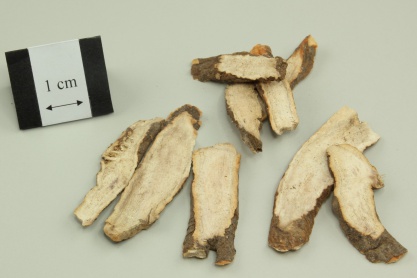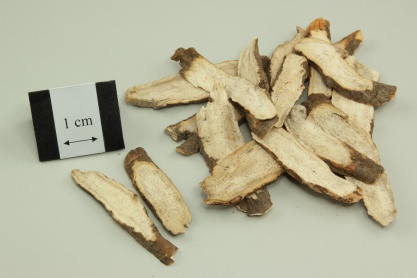赤芍
- ENG
- Red Peony Root
- LATIN
- Paeoniae Rubra Radix
| Medicinal Group | Heat-clearing and blood-cooling medicinal |
|---|---|
| Source | Dried root of Paeonia lactiflora Pall. or Paeonia veitchii Lynch (Fam. Ranunculaceae) |
| Nature and Flavors | bitter; slightly cold |
| Meridian Affinity | Liver |
| Actions | To cool the blood, eliminate blood stasis, and relieve pain |
Family
Ranunculaceae
Part used
Root and Rhizome
Indications
Maculation in epidemic diseases; haematemesis, epistaxis; inflammation of the eye; pain in the chest and costal regions; amenorrhea, dysmenorrhea; mass formation in the abdomen; traumatic injuries; boils and sores
Research Findings
- Red peony root decoction is more effective than rhubarb alone for severe acute pancreatitis patients.[1]
- Application of Dannang Recipe No. 2(consisting of red peony root) in perioperative stage of laparoscopic cholecystectomy can effectively promote the recovery of postoperative gastrointestinal motility and suppress the occurrence of acute inflammation.[2]
- Shufeng Liangxue Decoction (consisting of red peony root) is effective and safe in treating hormone dependence dermatitis, with the efficacy better and relapse rate lower than those of treatment with Western medicine alone.[3]
- Integrative western and Chinese medicine (consisted of red peony root) could treat crescentic nephritis to obtain good effect, and reduce the quantity of glucocorticoid necessity for treatment.[4]
- A heavy dosage of Paeonia rubra was effective in arresting the development of liver fibrosis, and in promoting the reabsorption of collagen fibres. [5]
- Qishen Huoxue Granules (consisted of Radix Paeoniae rubra) shows favorable prospect in treating critical AKI patients. [6]
Cautions
Contraindicated in amenorrhea due to deficiency-cold. Incompatible with Rhizoma et Radix Veratri
Report on adverse effect
No Data.
Reference
Reference
- Zhang M, Zhu DZ, Li ZS, Zhan XB. ( 2008). Red peony root decoction in treatment of severe acute pancreatitis: a randomized controlled trial. Zhong Xi Yi Jie He Xue Bao. , 6(6):569-75. doi: 10.3736/jcim20080605.
- Xu L, Jiang J, Du FZ. (2008). Application of dannang recipe no. 2 in the perioperative stage of laparoscopic cholecystectomy. Zhongguo Zhong Xi Yi Jie He Za Zhi. , 28(12):1090-2.
- Bai YS, Zhou CY, Wang JQ. (2008). Clinical observation on auxiliary treatment of hormone dependence dermatitis by shufeng liangxue decoction. Zhongguo Zhong Xi Yi Jie He Za Zhi. , 28(12):1121-3.
- Deng YY, Chen YP, Wang L, Hu Z, Jin Y, Shen L, Zhu R, Zhong Y. ( 2004). Clinical study on treatment of mid-advanced crescentic nephritis by qingre huoxue recipe. Zhongguo Zhong Xi Yi Jie He Za Zhi. , 24(12):1084-6.
- Yang DG. (1994). Comparison of pre- and post-treatmental hepatohistology with heavy dosage of Paeonia rubra on chronic active hepatitis caused liver fibrosis. Zhongguo Zhong Xi Yi Jie He Za Zhi. , 14(4):207-9, 195.
- Yu YB, Zhuang HZ, Liu C. (2010). Effect of Qishen Huoxue Granule for auxiliary treatment of critical cases of acute kidney injury. Zhongguo Zhong Xi Yi Jie He Za Zhi. , 30(8):819-22.












